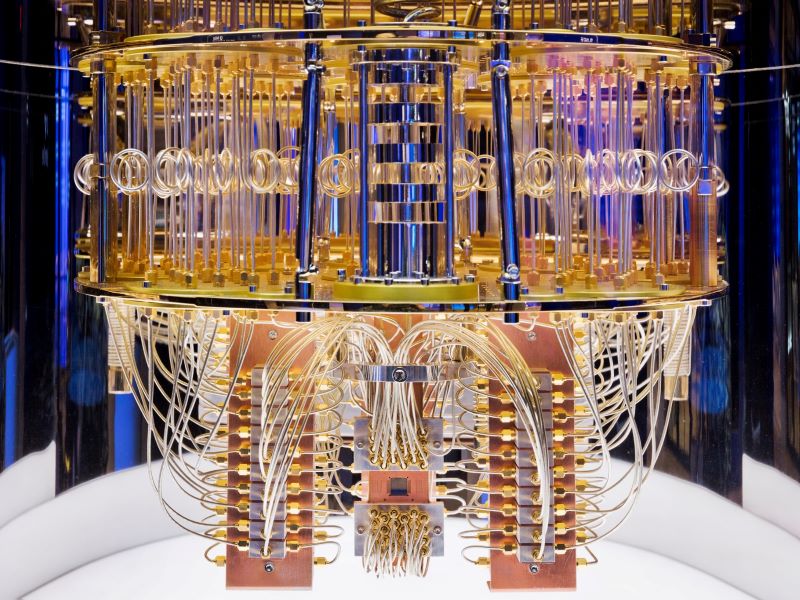Quantum researchers from two Sydney universities will team with the US defence research agency and tech giants to develop better ways of measuring the race towards fault-tolerant quantum computers.
On Thursday the University of Technology Sydney (UTS) announced its Center for Quantum Software and Information (QSI) has entered into a “multi-million dollar” partnership with the US Defense Advanced Research Projects Agency (DARPA) after winning several grants.
The partnership will see UTS researchers working on three projects from the American agency’s Quantum Benchmarking program, which was established last year to “re-invent key quantum computing metrics” for better testability and forecasting.
The University of Sydney is also involved in one of the other Benchmarking projects, after securing a $750,000 share of a $4.1 million contract from the US program. It means Australian quantum will be represented in most of the program’s first six projects.
DARPA is turning to Australian researchers to develop new metrics to better estimate the resources required to reach critical performance thresholds in a race to quantum computing it says could still take decades.

Under the new partnership, UTS quantum researchers, who specialise in quantum software, will work with several US universities, American industrial giants like Boeing and General Motors and leading quantum hardware companies, as well as potential quantum end users.
“We’ve now entered into a bit of a phase with quantum computing development where the hardware seems to be chugging along quite nicely,” UTS QSI research director Dr Simon Devitt told InnovationAus.com.
“But what people are getting really interested in is understanding exactly where the utility is of quantum computing at what scale — when do we expect these machines to offer tangible scientific and or commercial benefits across any kind of market sector where powerful computation is actually require?”
Some quantum companies claim this fault tolerant, error corrected era will be here before the end of the decade. But the DARPA Quantum Benchmarking program is about answering this timeframe question in a more quantitative way, including the surrounding infrastructure to reduce end user costs.
“It’s getting partnerships with quantum hardware companies, quantum software, institutes or companies and domain level experts to try and figure out exactly where are their bottlenecks with regards to computational problems and, first of all, can quantum help with a specific use case? And what scale do these machines need to get to offer those benefits?” Dr Devitt said.
QSI is involved in three of the six projects to secure a contract from DARPA’s Quantum Benchmarking program, while University of Sydney theoretical quantum physicist professor Stephen Bartlett and his team are involved in another, the Hierarchical Quantum Estimation of Resources project led by US R&D company BBN Raytheon.
“We’re very excited to be participating in this leading program around assessing the resourcing needed to enable large-scale quantum computing.,” Professor Bartlett told InnovationAus.com.
“Our particular contribution at the University of Sydney is to investigate the costs of performing quantum error correction in quantum computations.”
The UTS QSI program is already working on the timeline and scale questions in Australia by benchmarking quantum algorithms and the US proram is expected to accelerate the process.
“It’s a very long and laborious process,” Dr Devitt said. “It usually requires many researches, potentially years or longer of work, and it takes a lot of effort. The DARPA program is there to try and streamline that process.”
Quantum has gained more recognition from Australian governments after breakthroughs by local researchers and the recognition of a potentially transformative impact on almost any application requiring large data calculations.
After warnings of falling investment, federal and state governments have pledged more support for Australian quantum research, including a national strategy, commercialisation hub, and more R&D investment.
The new Labor federal government has also committed to establish an Australian Strategic Research Agency with $1.2 billion in funding over the next 10 years to be modelled on DARPA.
Dr Devitt said more can be done to develop the local sector and homegrown program rather than piggybacking on the US would help, particularly for quantum software which has not received as much attention as hardware in Australia.
DARPA’s Quantum Benchmarking program is the type of program Australia’s new agency could develop itself and similar 10-to-15 year technology horizons would be welcome.
“[DARPA has] been involved in quantum ever since the-mid-to-late 90s. Having a sort of Australian equivalent of DARPA that sets its sights on those far flung horizons and funds basic level research under the auspices of ‘look, we know this is probably going to be a thing in 10 or 15 years. So let’s get under it now. And try to develop the best capability we can’, I think is a wonderful thing,” he said.







